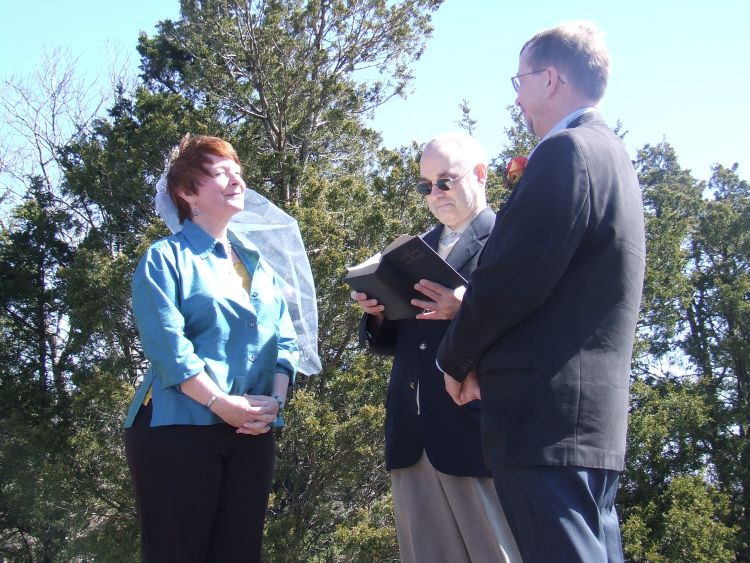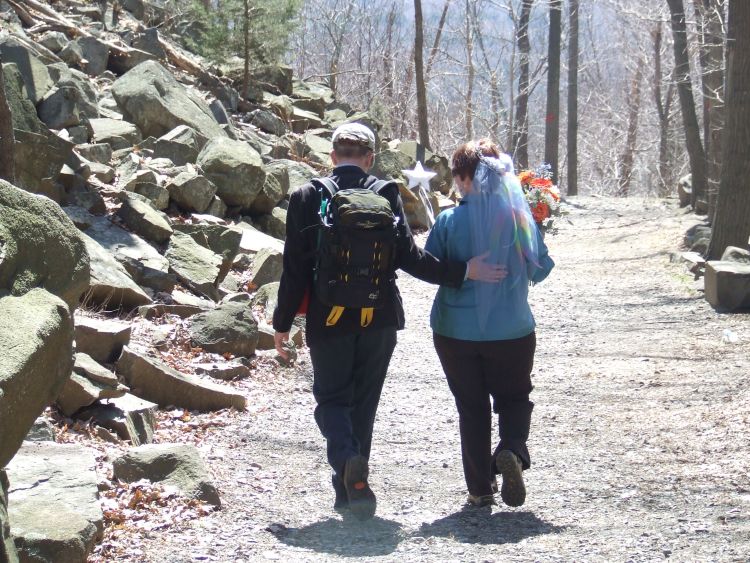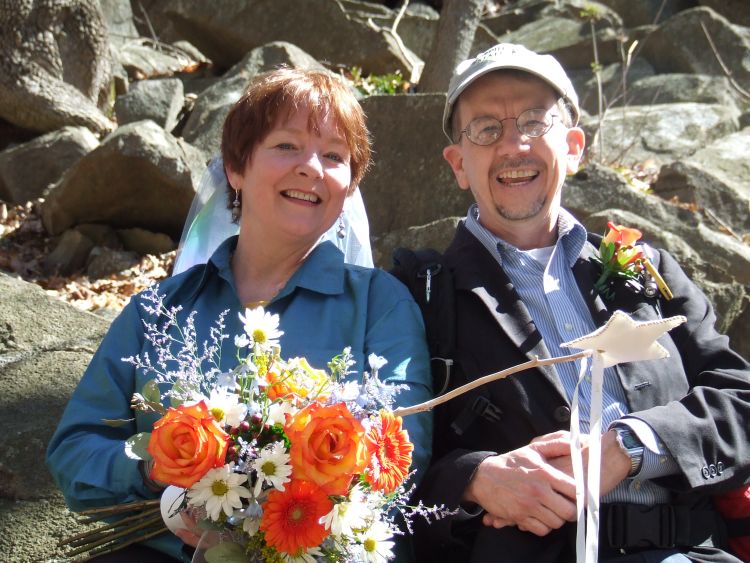Sundays aren't for sleeping
How volunteers at Sleeping Giant State Park are dealing with the tornado damage
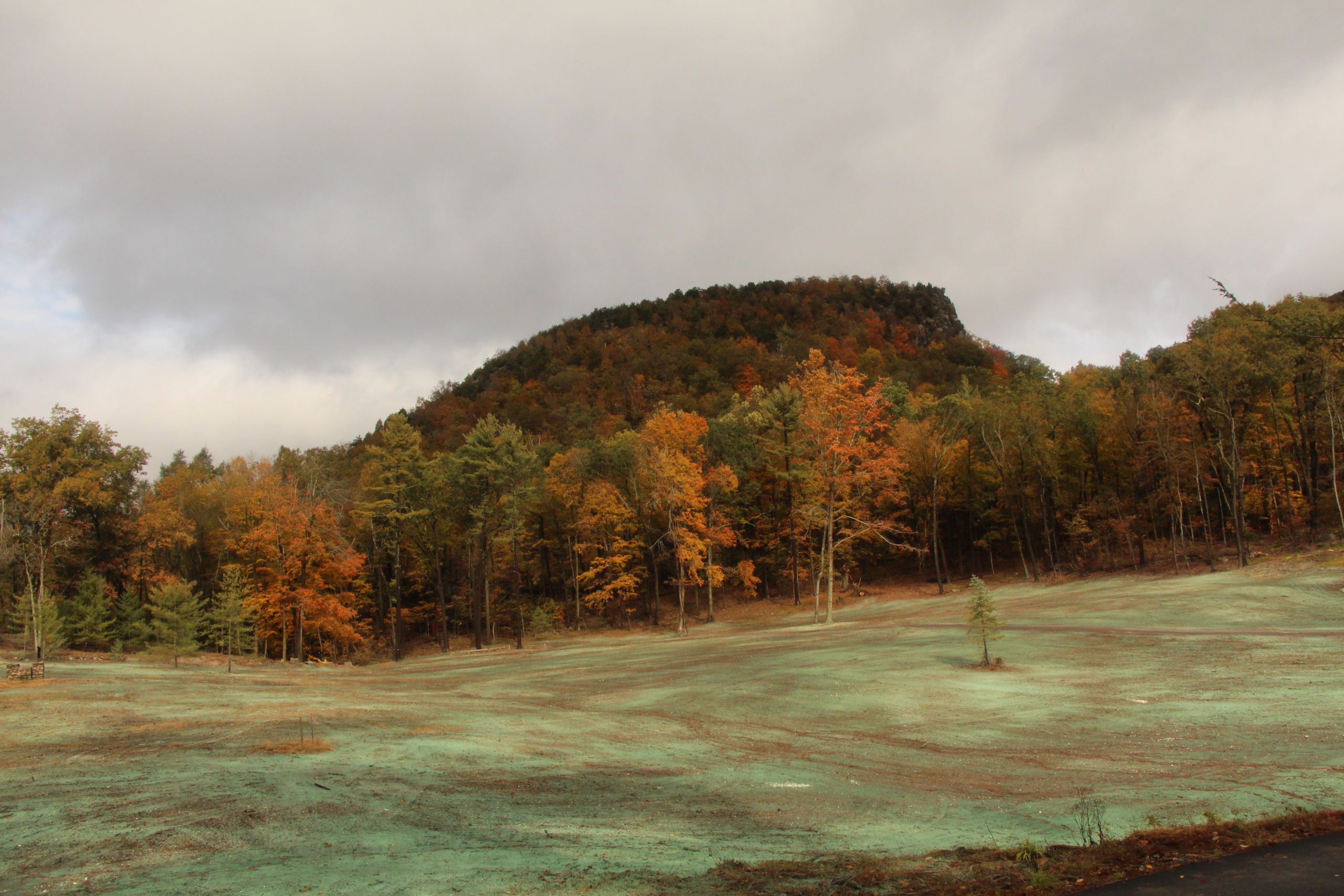
It was 11 o'clock on a Sunday morning. You could see your breath condensate into the crisp morning air.
DeGennaro, the Sleeping Giant Park Association’s (SGPA's) trails crew supervisor, meets with 50 other volunteers every Sunday at 9 a.m. to clean up the damage left in the aftermath of the nameless tornado that swept through Hamden nearly six months ago.
DeGennaro had been celebrating his daughter’s college graduation at the Hartford XL Center as the storm devoured the park's trees on May 15.
“I was heartbroken. It's just a very sad situation to see the devastation that had occurred," said DeGennaro.
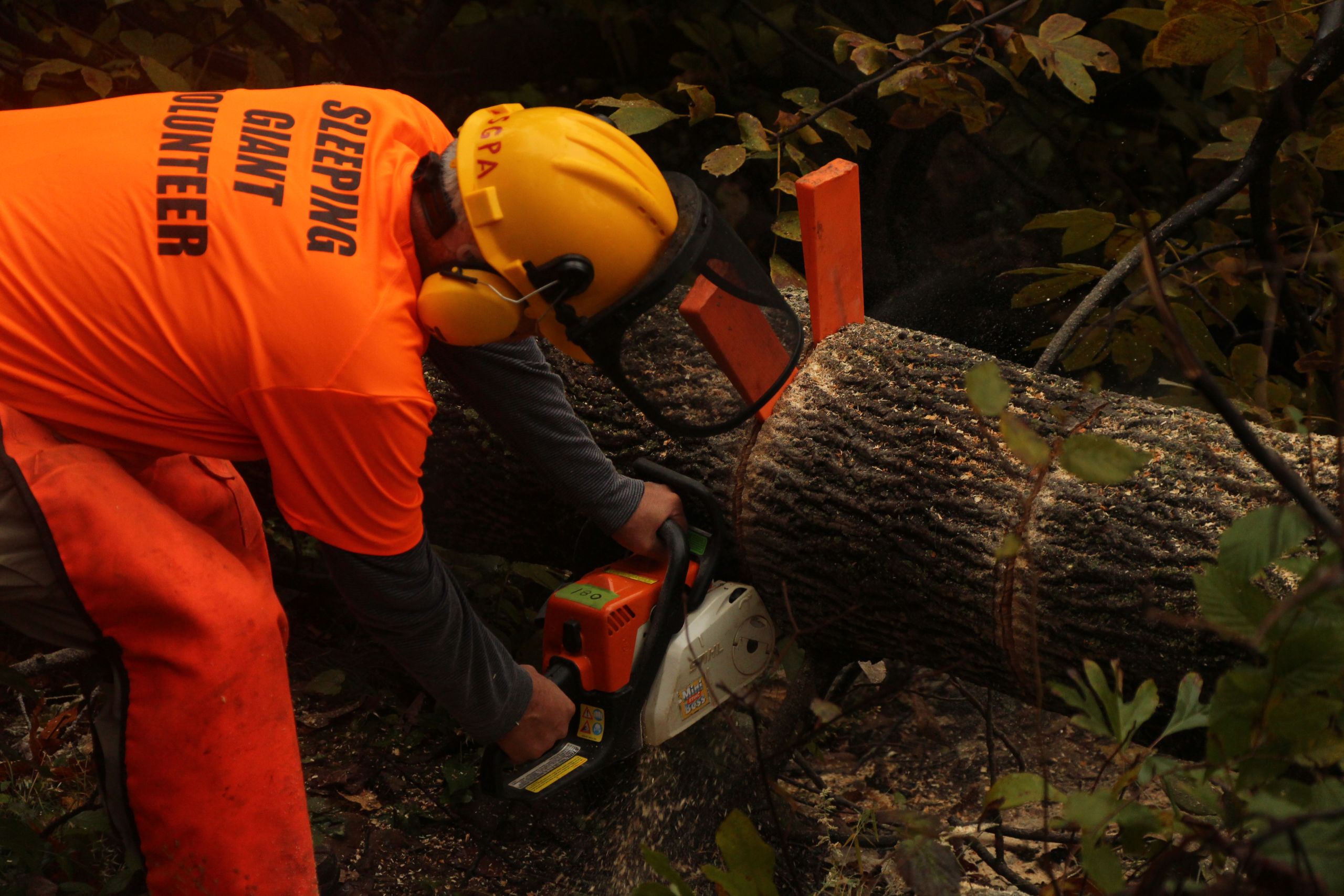
Since the storm, the number of volunteers that regularly help to clean up the park has doubled.
“Before the storm, we had about 20 volunteers, of which probably around half would show up on any given Sunday and we’d walk the trails and pick up trash. Once in a while we’d take down a tree, but that wasn’t common,” said Chuck Schall, SGPA volunteer.
“Then when the tornado hit, people came out of the woodwork. Now, we’ve got about 70 people that contacted us and out of that we have about 50 that have showed up and out of that, about 40 that come religiously.”
Each Sunday, since June 26, the volunteers split up into teams of three or four to take on the giant. Equipped with a chainsaw, safety helmet and other tools, each team sets out to conquer another section of the various trails.
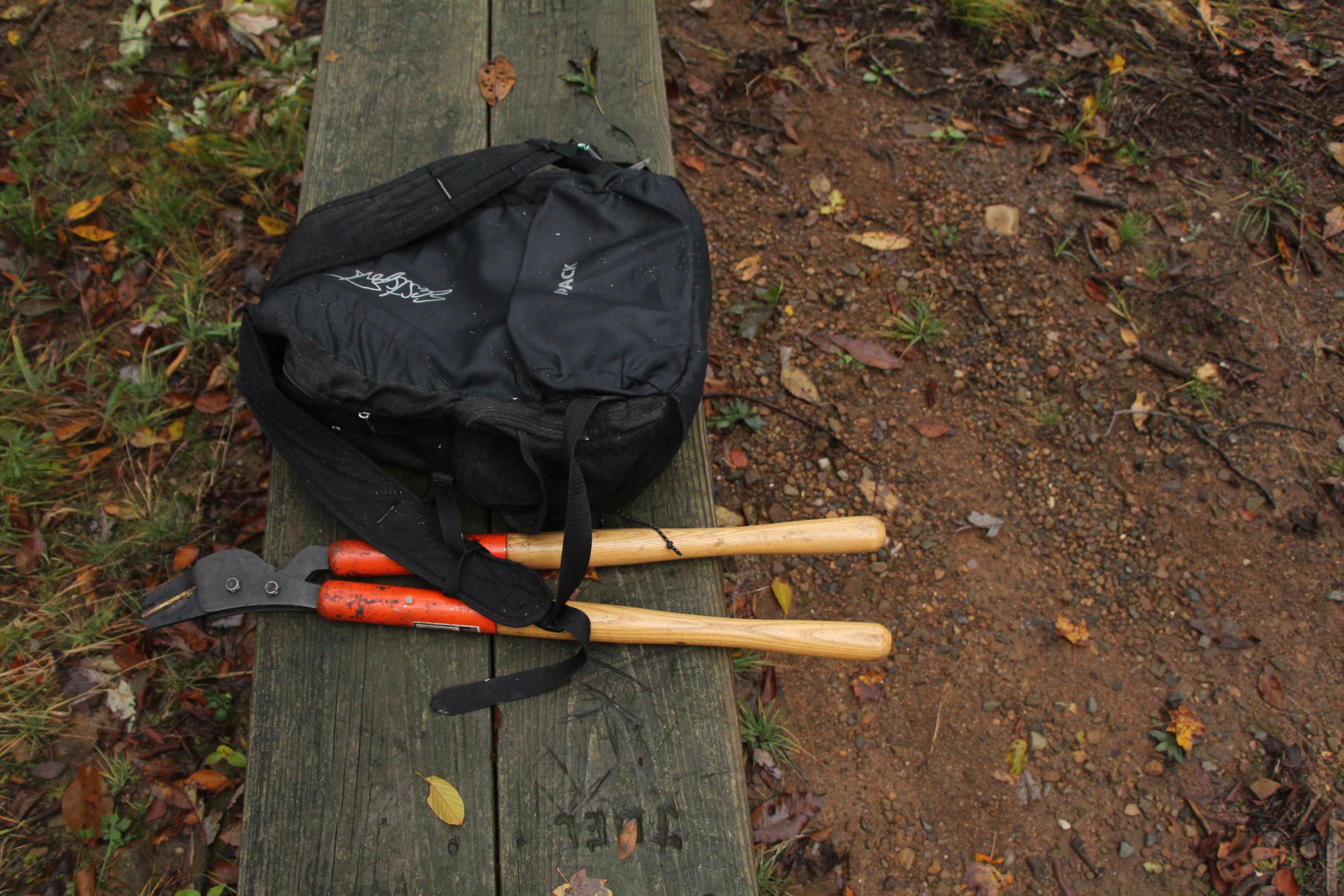
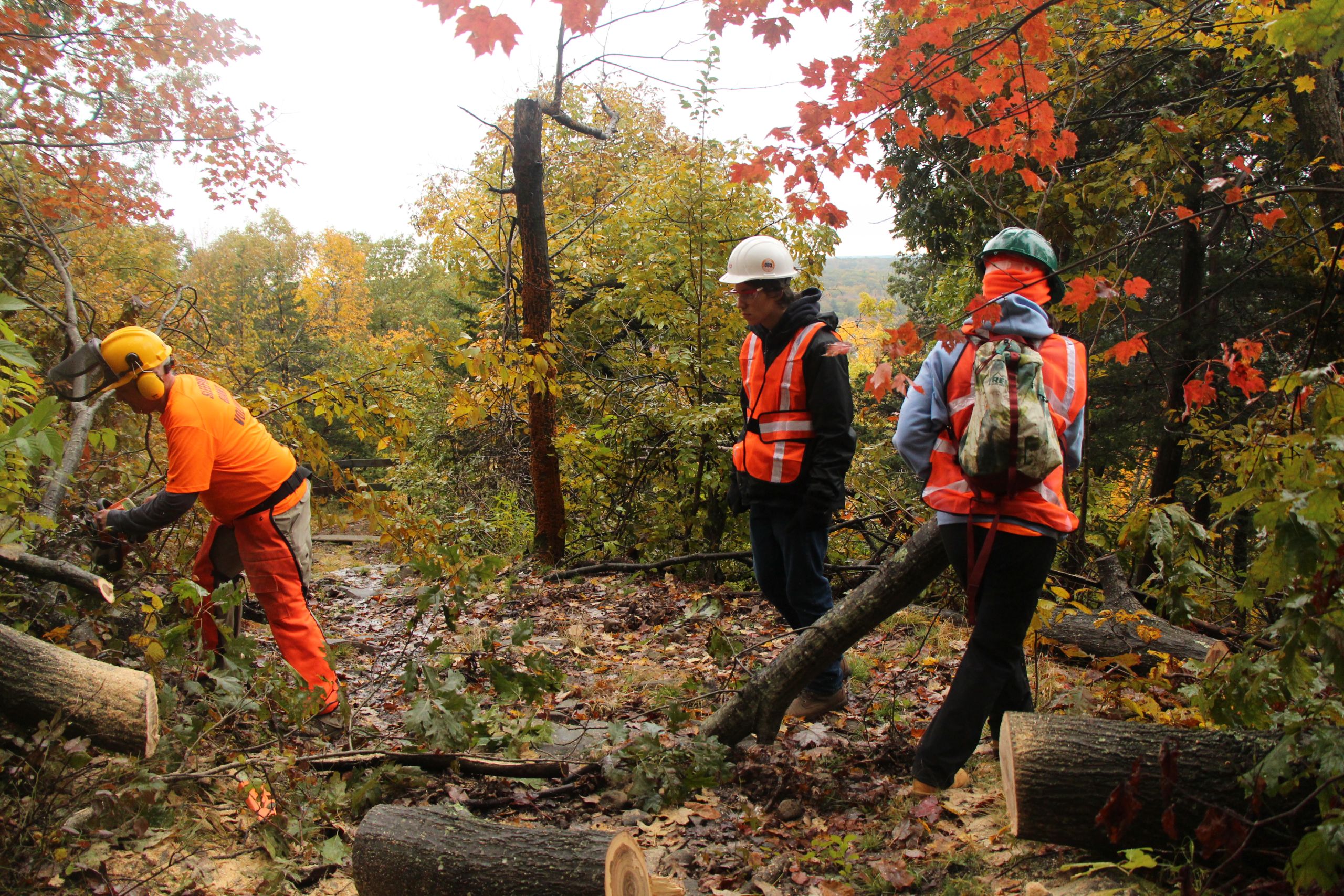
“We kind of started a campaign to get back on the trails. DEEP (Department of Energy and Environmental Protection) was understandably hesitant about people going in, but we made it clear that we were the only ones that were capable of doing the trails and we wanted to get started. They got it all sorted out and let us back in, and we’ve been busy ever since,” said Schall.
On Sunday, Oct. 28, SGPA's 18th Sunday of storm cleanup, DeGennaro’s team, including two other volunteers and a reporter, ventured out to the nature trail. The group came across six fallen trees in a matter of two hours. With the help of Ray’s saw and a few pairs of hands, the volunteers were able to clear up more of the trail, coming closer to the day that the park trails will be reopened to the public.
“We’ve cleared about close to 800 trees so far. I’m going to be optimistic and say there’s 700 more left. Of the 11 trails, we’ve done all the east west and 75 percent of the north south ones. The worst part of the park that was hit was the north part, where Tuttle Avenue is, near Wentworth's,” said DeGennaro.
While DeGennaro has been with the SGPA for nearly seven years, some have been volunteers at the park for over 20 years and others have just begun.
For Chuck Schall, who has served as membership chairman for the board and as president, the park holds a special place in his heart.
Chuck Schall started going to the Sleeping Giant as a little boy, and even received his boy scout hiking merit badge at the park. This was just the beginning of the memories he would have at the giant.
“My wife and I were actually married on the giant. We got married up on the white trail on the chest. When you look up from Quinnipiac, it’s the cliff that you see up high. That was twelve years ago. I met a woman, she had never hiked before. We started hiking and I convinced her to get married up at the top of the giant,” said Schall.
“So we invited about 50 of our friends, we all walked up and it was the same day as trail crew. So, in addition to all the wedding guests, all the trail crew came to the ceremony. It was the first weekend in April, and it turned out to be a magnificently beautiful day.”
“She had a veil, and one of her friends gave her a wand so she looked like a rather unusual princess, I guess you could say,” said Schall.
Lila Carney, director of advising and student development at Quinnipiac University, enjoyed hiking the Tower Trail on her lunch breaks. She estimates that she has hiked the trail nearly 1,000 times with friends.
In fact, she enjoyed hiking at the park so much that she ventured up to the tower on the doomed day, itself.
“I made it all the way to the tower that day and I took a picture of myself at the tower to send to my friends because I was hiking alone so I wanted to let them know I made it to the top, just for safety reasons,” said Carney.
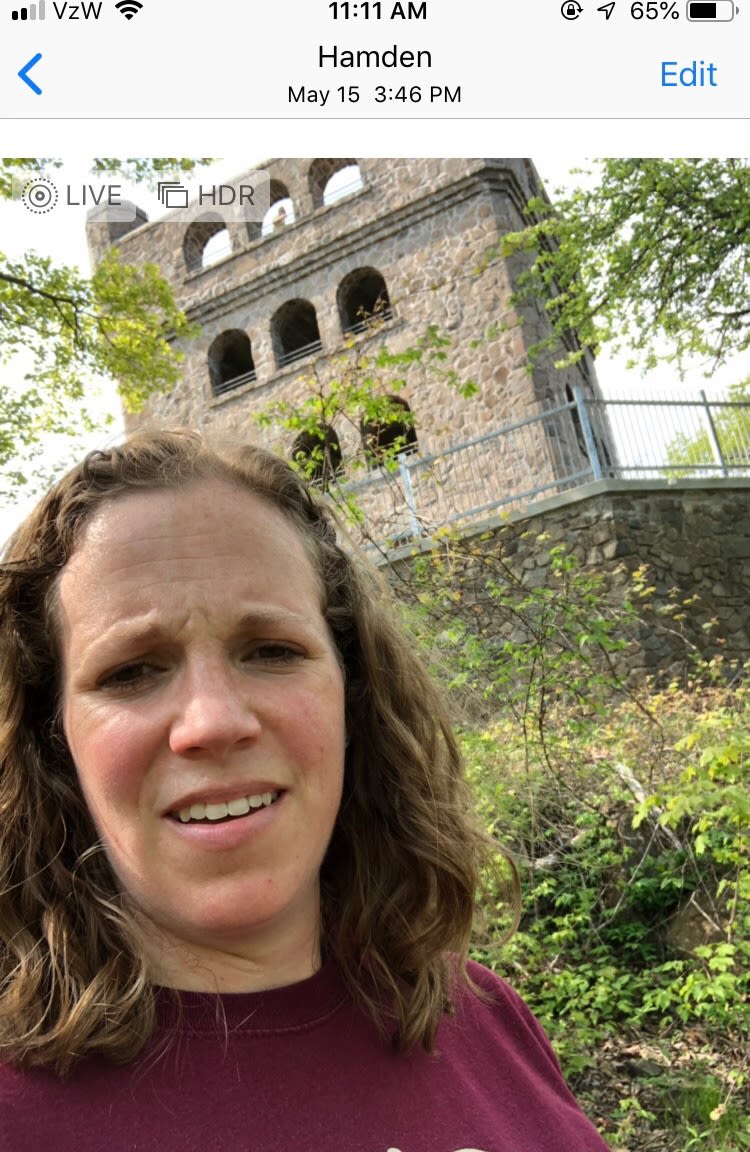
Time stamped photo of Lila Carney atop the Tower Trail.
Time stamped photo of Lila Carney atop the Tower Trail.
"So I happened to take this picture of myself at the top of the tower probably an hour or so before the tornado hit. On May 15, I took this picture at 3:46 p.m.,” said Carney.
“I knew the weather was going to be bad, so when I was hiking down people were still going up and I thought to myself ‘haven't you seen the weather forecast?’”
Quinnipiac closed its offices on May 16 and 17. Three days after the storm, Carney saw the damage that occured at the park just a few hours after she had left.
“It was insane. Getting there and seeing it in person was shocking. It was really insane how much damage was there,” said Carney.
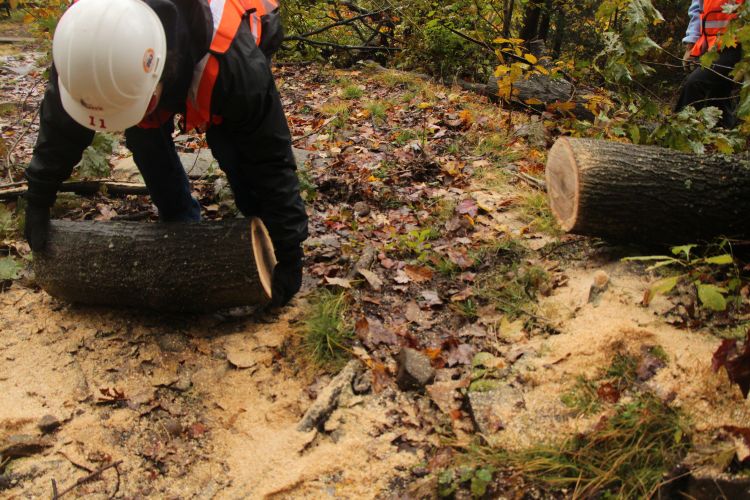
SGPA volunteer removing freshly cut log from a trail path.
SGPA volunteer removing freshly cut log from a trail path.
“It looks like we’ve accomplished a lot on the map but in fact, some of the areas that we’ve cleared, I’ve found out that other trees have fallen. So there’s still a lot of hangers – trees or parts of trees that are stuck in branches on other trees – and when a good gust of wind comes, they can fall at any moment and that’s why we’re not encouraging the public to come out yet,” said DeGennaro.
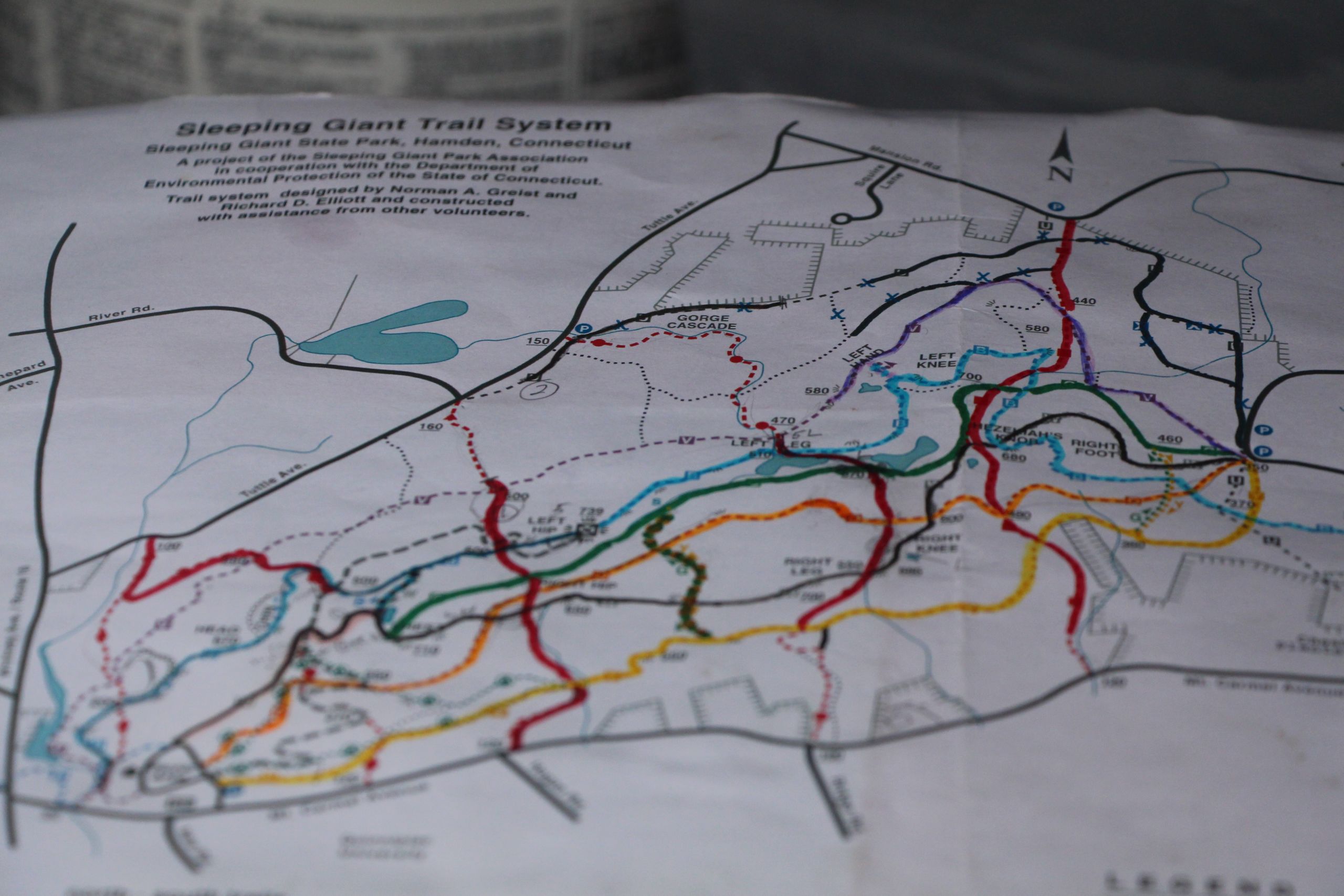
The Connecticut Department of Energy and Environmental Protection (DEEP) encourages the public to use the 108 out of 110 state parks that were not affected by the storm, while authorized crew members continue to clean up the Sleeping Giant, Wharton Brook State Park and Kettletown State Park, which currently has limited trails open.
Although Sleeping Giant State Park still needs a lot of work, the park’s reopening is not too far ahead.
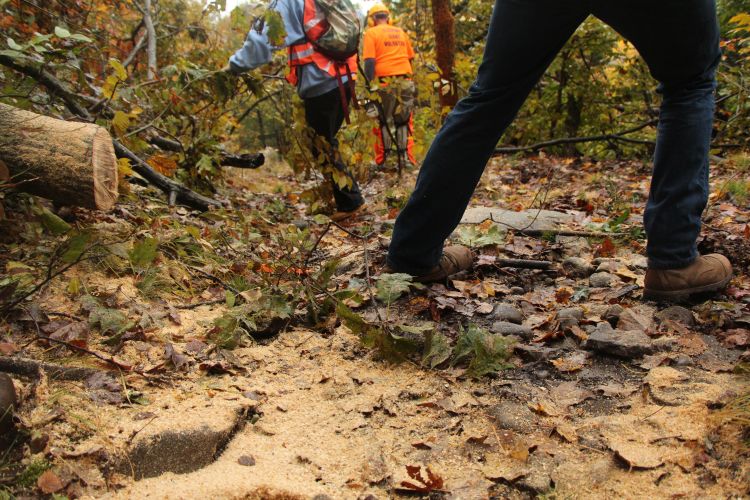
SGPA volunteers cleaning up the trails.
SGPA volunteers cleaning up the trails.
“I know they’re [DEEP] doing a lot of research and investigating as far as what can be done. I know they've put down grass seed to keep the picnic area from eroding and they’re putting a new roof on the pavillion which is right off the picnic area. But beyond that, it’s a big job but it's a good organization and we’ve always worked very closely and are very friendly with DEEP. The park association will do whatever it can. Anything that we are capable of, we’d be happy to do,” said Schall.
Note to the reader: DEEP did not respond for comment.

